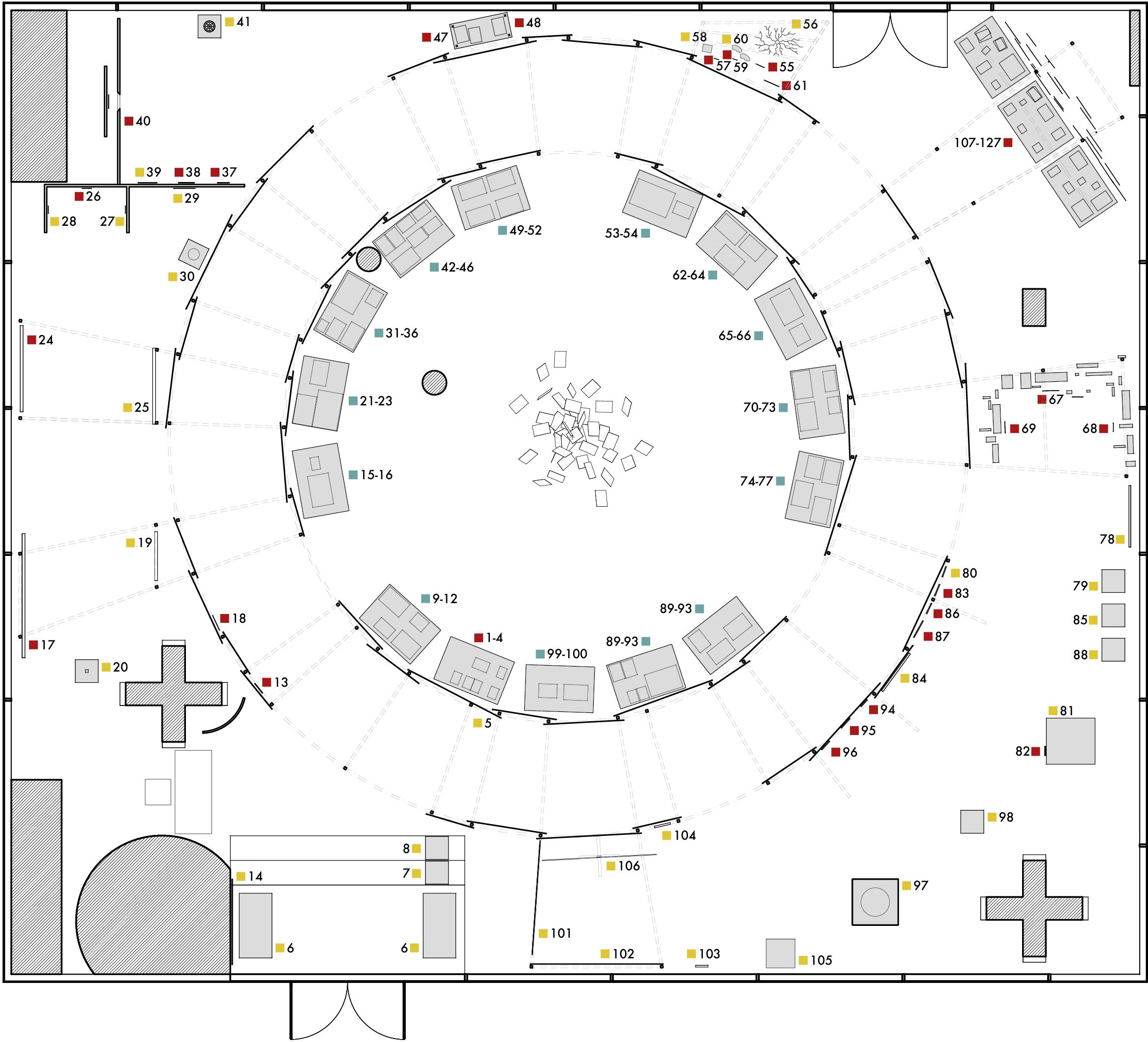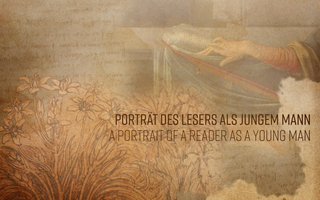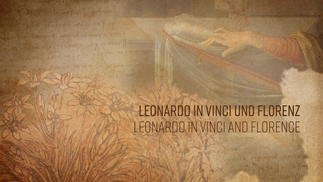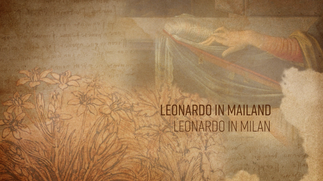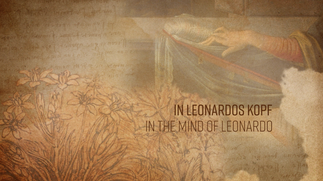
Leonardo's intellectual cosmos <
The intellectual cosmos of Leonardo da Vinci (1452–1519) is seemingly inexhaustible. It echoes the diversity and cultural abundance of the Renaissance, which he embodies in all its facets like few others of his time. He applied his curiosity and creative commitment to all fields of knowledge, from the forces of nature, both large and small, to all varieties of human form and design.
Leonardo’s era was characterized by upheavals: the rediscovery of antiquity, the rise of trade and science, the invention of printing, the European discovery of America, and the beginnings of a new astronomical worldview. The tensions affecting his time included those between Christianity and the revived pagan antiquity, faith and science, the bourgeoisie of the burgeoning cities and feudal society, new technologies and the traditional social order. The great emphasis placed on the highest level of individuality of human actors stood in contrast to the aspiration of their thinking to universal validity, while the growing potency of art began to compete with the forces of nature. All this took place alongside disruptive experiences of war, crises, and diseases such as the plague—but also the challenge posed by the new possibilities of thought, belief, and action.
Leonardo and other contemporary artists, scientist-engineers, and humanists struggled to balance out these tensions in their work, although not at the price of flattening them or accepting one-sided solutions. Instead, they succeeded in giving expression to these tensions in their creative works and using them productively. The willingness not to conceal contradictions, but to battle through them in a constant dialogue with oneself and others, was considered a virtue. Leonardo’s intellectual cosmos was deeply influenced by contradictions, such as his quest for the dynamical and even conflicted harmony of the world and his willingness to address the inherent tensions in a never-ending diversity of details, to each of which he devoted all his attention and skill.
The much-discussed antithesis between observation of nature and traditional scholarship through books was another issue Leonardo refused to deal with one-sidedly, tackling both aspects with great commitment. Compared with his predecessors, he was almost unique in how he perceived the diversity of nature, at the same time using the new medium of book printing to build up a remarkable library that influenced and corresponded to his own worldview.
To a large extent, Leonardo’s library could be reconstructed from his manuscript notes. It was unique yet reproducible. This is made clear in this exhibition, which gathers a number of works from his library, but not his personal copies, which–with possibly one exception–have not survived. Instead, the “Berlin Leonardo Library” has been compiled from contemporary works from the holdings of libraries in Berlin. In particular, they include the Staatsbibliothek zu Berlin (State Library of Berlin), the Kunstbibliothek (Library of Art History), and the Kupferstichkabinett der Staatlichen Museen (Museum of Prints and Drawings) and, last but not least, the Library of the Max Planck Institute for the History of Science, which has focused on the upheavals of the early modern period and their consequences for the past 25 years and continues to study them today. The specimens we have collated testify to the accelerated dissemination of knowledge through the printing and circulation of books that helped to make Leonardo’s intellectual cosmos possible in the first place.
Leonardo grew up in an emergent and fascinating world of books in which contemporary knowledge circulated in new ways and could be combined from varying perspectives. He had ambitious plans to be an author himself but the traces of his wide-ranging work that he left for posterity are provisional and often sketchy in character compared with the cohesive style and closed form of the books he aspired to but hardly ever achieved.
The exhibition shows Leonardo’s world in a process of upheaval: in media, in the transition to a new knowledge economy, in the struggle for a new understanding of the world. Which books influenced Leonardo’s intellectual cosmos? How did he work with his books? What became of his plans to write and publish his own books? Why was it so difficult for him to bring his ideas together in book form? What was lost in the transition from the manuscript world with its many and diverse forms—in Leonardo’s case it was often a complex weave of individual notes—to the book world, and what does this loss mean for our world today and its approach to new media and knowledge economies?
The exhibition resists the temptation to categorize Leonardo as a precursor, for example, of modern science and technology. Instead, it searches his intellectual cosmos for a distant mirror of our own era of radical change. What we find there, looking through Leonardo’s eyes, are not only countless unfinished projects but also the still undecided possibilities for understanding and shaping the world in one way or another. Precisely this view of his works as open and accessible offers us the opportunity to find inspiration for balances that do justice to the tensions and contradictions of our own time.
Jürgen Renn
Leonardo's “Berlin Library”
Leonardo’s “Berlin Library” is the presentation of material from a lost historical book collection. Its specific focus on Berlin distinguishes it from earlier presentations over the past 150 years, which were conceived, described, and shown to audiences in different places worldwide.
The starting point for any reconstruction of Leonardo’s library, which differs greatly from the libraries of contemporary artists and the private libraries of his peers, is his own writings. His numerous notebooks, the codices, contain many diverse references to books, authors, and titles. He cites, excerpts, and copies entire passages. But the primary basis for reconstructing his personal book inventory are his book lists, which vary greatly in scope:
- Codex Trivulzianus, fol. 2r (1487–1490)
- Codex Atlanticus, fol. 559r (ca. 1495)
- Codex Madrid II, fol. 2v–3v (ca. 1503–1504)
It is not always easy to identify the functions of these lists: Are they evidence of what he had read? Reminders for planned acquisitions? Or are they inventories in the sense of a revision? The latter is probably true, at least for the more extensive lists. Titles such as “Note on the books I’m leaving locked up in the chest,” or “in the box in the monastery” seem to indicate that the lists were made in connection with a journey or moving to a new residence.
They are not catalogues in the modern sense, but rather notes and memoranda that were probably meant purely for the owner’s private use (and that of his close circle). And this is exactly where the challenges for modern interpretation begin.
Approach to a “historical” library
Based on the current state of research, the first task was to transcribe Leonardo’s mirror writing, to translate the individual entries as literally as possible, and to assign concrete book titles to them. It is not always possible to give a definite identification: Leonardo’s note, “cronica del mondo” (world chronicle) could just as easily refer to Giacomo F. Foresti’s Supplementum chronicarum or Hartmann Schedel’s Liber chronicarum. The two titles in their respective editions from Venice in 1486 and Nuremberg in 1493 are consequently both featured in the exhibition. But even if a title is unambiguously identified, it is by no means clear which edition is meant (printed or handwritten, complete or in excerpts?). On the other hand, vague remarks like “prediche” (sermons) are simply impossible to identify, and individual entries are repeated, sometimes on multiple occasions.
Stocking Leonardo’s Berlin Library
The material reconstruction of Leonardo’s Berlin library grew out of an investigation of local library stocks and against the backdrop of specific local conditions with possible incidences of war loss or deficient states of preservation. This is why the work of choosing editions that could be exhibited—an endeavor that benefited decisively from Carlo Vecce’s expertise in its early stage—sometimes led to certain deviations or even anachronisms in relation to Leonardo’s “historical” library.
Extension and Contextualization
The established core (or “corpus”) of Leonardo’s library was thus extended for the Berlin venue to include “new additions,” in other words, titles that are not definitively recorded in his book lists. This process seemed justified in the following three cases in particular:
Leonardo is known to have been familiar with specific works although they do not appear in the lists. Examples include Dante’s Divine Comedy and Vitruvius’ De architectura. The same applies to Luca Pacioli’s Divina proportione, a work to which Leonardo himself contributed, and which is represented here as a kind of specimen copy.
If no appropriate edition of the identified work was available in Berlin, it was replaced by a substitute. For example, a Miscellanea manuscript from the 13th century, which contains, among others, texts by Euclid, Jordanus Nemorarius, Archimedes, and Alfraganus, acts as a substitute for Leonardo’s note (perhaps also related to a manuscript) “euclide vulgare c[i]oè e’ p[rim]i libri 3” (“Euclid in the vernacular only the first 3 books”).
To further understand and contextualize Leonardo’s intellectual cosmos, it seemed advisable to add specific titles to the collection that establish a relation to the northern European region or that did not appear in Leonardo’s lifetime. One example of these somewhat anachronistic “remote loans” would be the General trattato di numeri, et misure by Niccolò Tartaglia, first printed in 1556. Although it appeared 37 years after Leonardo’s death, it is particularly suited to illustrate the type of commercial mathematical training Leonardo would have received in his youth.
Finally, after this work came the arrangement of the selected book specimens according to the 10 sections of the exhibition, which are intended to illustrate various facets in depth and to show the gradual development of Leonardo’s intellectual cosmos.
